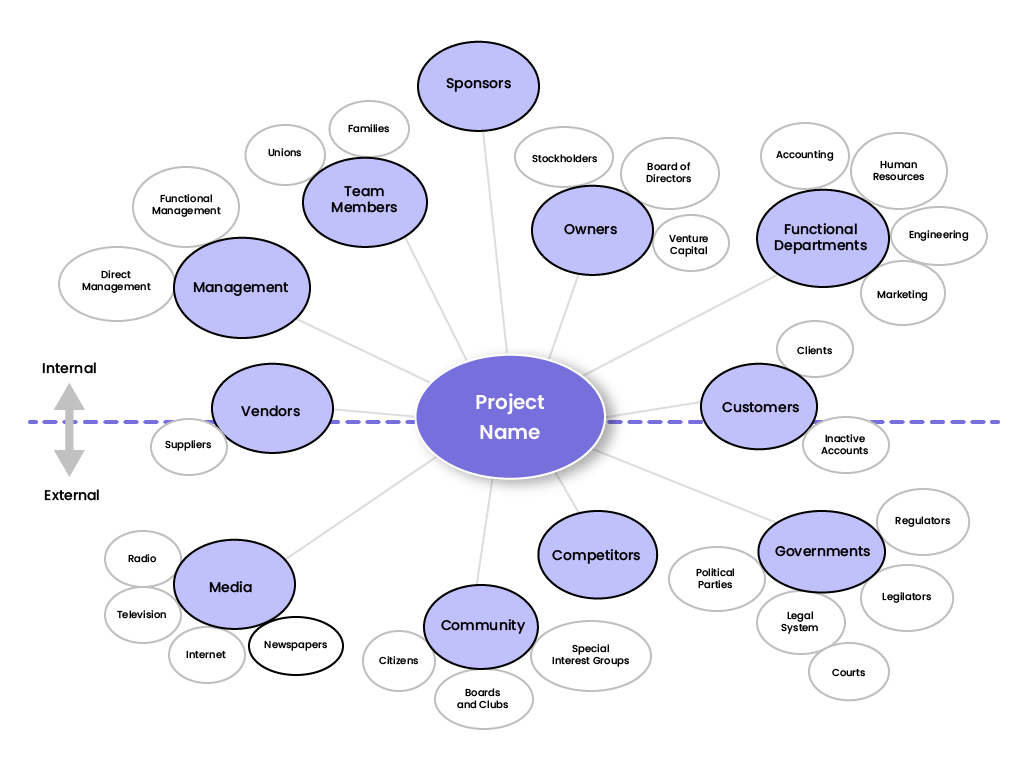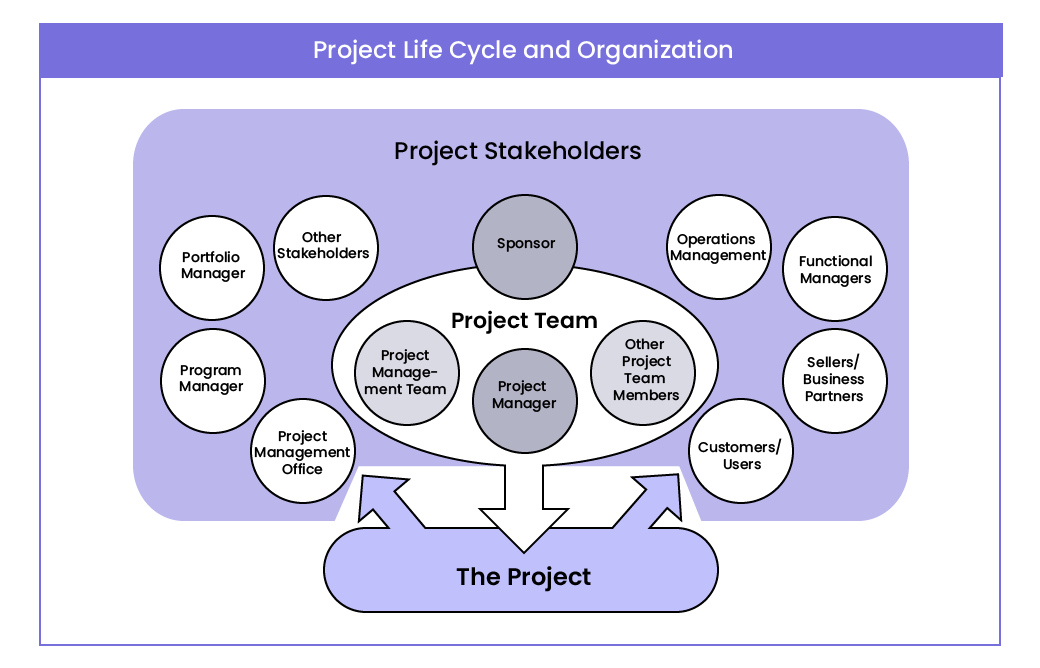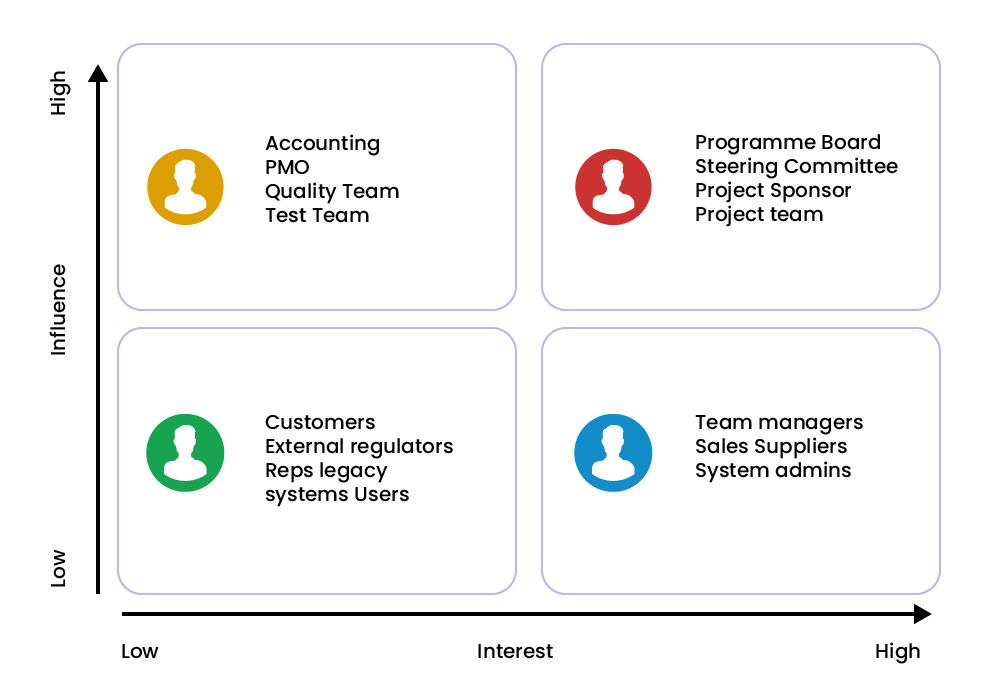No project operates in a vacuum. If anything, the success of a project is the cumulative effect of its various stakeholders. However, when several entities get involved, there is a possibility of confusion breeding to the point where you lose sight of the primary goal. In other words, as the good adage goes – too many cooks spoil the broth. If such a possibility sounds ominous (as it should), then you, as a project manager, should have a hold of stakeholder management.
Here is an in-depth look at project stakeholder management, starting with who are stakeholders and how you can manage them!
Who are the stakeholders in a project?
Any individual, organization, or group that gets affected by the outcome of a project or can affect its outcome falls under the ambit of a project stakeholder. They are champions having a vested interest in the success of a project. As such, they would actively work towards ensuring project success. Given this role, it is essential that such advocates are made a party to the project development cycle across different stages.
Project stakeholders can be broadly classified into the following two types:
- Internal Stakeholders: These are project stakeholders from inside the company. As they are employed by an organization to ensure project success, they have a greater responsibility towards it. Examples: project teams and team members, project managers, project sponsors, employees, owners, executives, steering committees, etc.
- External Stakeholders: As the name indicates, these project stakeholders are from outside the organization and are indirectly affected by the project outcomes. They may not be employees but will be influenced by how the project turns out. Examples: customers, end-users, clients, government, communities, suppliers, intermediaries, etc.

How to identify key stakeholders in a project?
Before diving into the details of strategic stakeholder management, you need to first apply your understanding of project stakeholders to identify them. Naturally, this is a task that needs completion as early as possible so that the project stakeholders can contribute meaningfully.
The following strategies or documents can come to your rescue while searching for project stakeholders:
- Project Charter: Since the project charter is a documented form of the crux of the project, it would obviously feature those who have a stake in your project.
- Enterprise Environmental Factors: EEFs factor in organizational structure, industry standards, and competition, which can shed light on possible project stakeholders.
- Team Discussions: Involving the existing project stakeholders through brainstorming sessions and by asking probing questions can help you identify other stakeholders that you may have missed out on.
Why are stakeholders important?
The importance of project stakeholders (and, by extension, project stakeholder management) can be summarized in the points given below:
Holistic and well-rounded experience
As much as any project manager would want, they cannot know everything under the sun. On the other hand, project stakeholders are typically experts in their respective areas. As such, they will offer valuable insights that can enhance the project’s performance and functioning.
Thorough risk analysis
In addition to guiding project managers in achieving goals, project stakeholders can also flag possible risks and devise tried and tested strategies to mitigate the same. Being thoroughly prepared beforehand can help project managers handle risks effectively.
Sets realistic expectations
Even though stakeholders have the project’s best interest in mind, their ranging priorities can detract from project success. With an effective stakeholder management plan, it is possible to agree upon terms so that everyone has realistic expectations.
Greater probability of success
Since all project stakeholders are rooting for the project’s success, they would all help in their own ways to facilitate it. Plus, their constant involvement throughout the project development cycle would ensure that everyone is working towards a common goal and nobody goes astray.
Tips and tricks for effective stakeholder management

Project stakeholder management is no child’s play. You have to make sure that everyone walks away happy from each interaction. Plus, it is continuous and exists alongside your project, which means that as long as your project is underway, you will have to resort to stakeholder management strategies. Fortunately, the following tricks and tips can enhance your stakeholder management plan in different ways:
Document everything
As a project manager, one of your primary responsibilities is to document everything – that goes for the project stakeholders too. Prepare a list of the project stakeholders during the identification stage and note their respective needs and importance with respect to the project.
Instill a sense of ownership
The project stakeholder register that you may create above can also be circulated so that every stakeholder has full cognizance of their role and responsibility. In doing so, you will be instilling a sense of ownership, responsibility, and accountability.
Communicate, Communicate, Communicate
Remember, communication is a two-way street and plays a crucial role in strategic stakeholder management. Make an effort to have honest, deliberate, conscious, and open conversations where the stakeholders get an equal opportunity to have their say. Follow a schedule if you must.
Maintain stakeholder data
Your stakeholders are like your customers. And just as customers may get frustrated while communicating without context or asking the same questions again and again, or furnishing critical information like their name, etc., your stakeholders would too. Maintaining historical stakeholder data can offset such pain points.
Offer a high-level project overview
Project stakeholders would naturally be more interested in staying updated on the coming and going of the project. While granting them a high-level project overview is a non-negotiable, you can take it one step ahead to grant them visibility over things that matter to them using personalized dashboards.
Engage stakeholders throughout
Once you have identified the key project stakeholders, make it a part of your stakeholder management plan to periodically engage them with questionnaires, interviews, and interactions. In doing so, you will be capturing valuable feedback to improve the project.
Formulate a stakeholder power/interest matrix

The truth is, not all stakeholders are alike. The stakeholder power/interest matrix is a secret to strategic stakeholder management. It allows you to prioritize high-power, high-interest stakeholders so that you can engage them thoroughly and ensure their satisfaction.
Leverage stakeholder empathy mapping
Stakeholder empathy mapping accounts for what stakeholders see, hear, think, feel, say, and do. Resultantly, you get the chance to step into their shoes while performing a well-rounded analysis from various perspectives. It would also make you more open to their suggestions.
Implement change management
No project is immune to change. In fact, it is more susceptible to it the more stakeholders get involved. Stay flexible with the idea of project changes and have a requirements change management plan ready to honor the same.
How you can manage stakeholders with Xebrio
In a requirements management software like Xebrio, adding stakeholders is crucial for ensuring a successful project outcome. By including key individuals such as clients, project managers, developers, and testing team members, everyone has access to the same information and updates in real-time, which promotes visibility and collaboration throughout the requirements gathering and management process. Furthermore, Xebrio allows stakeholders to be assigned specific tasks and responsibilities, and their feedback can be tracked and reported on. This allows for better accountability and decision making throughout the project. Additionally, stakeholders can review and approve requirements, providing project managers with all the necessary information before starting a project. Xebrio also allows project owners to add client vendors and give them restricted access to only project-related information.
Closing thoughts
Project stakeholders and stakeholder management should not be an afterthought. In fact, they are the very foundational elements of a project that features right from the start. Identify them early and get them on board. Once in, give them their due and make them feel heard and valued, and your project will be rewarded with greater success!






0 Comments